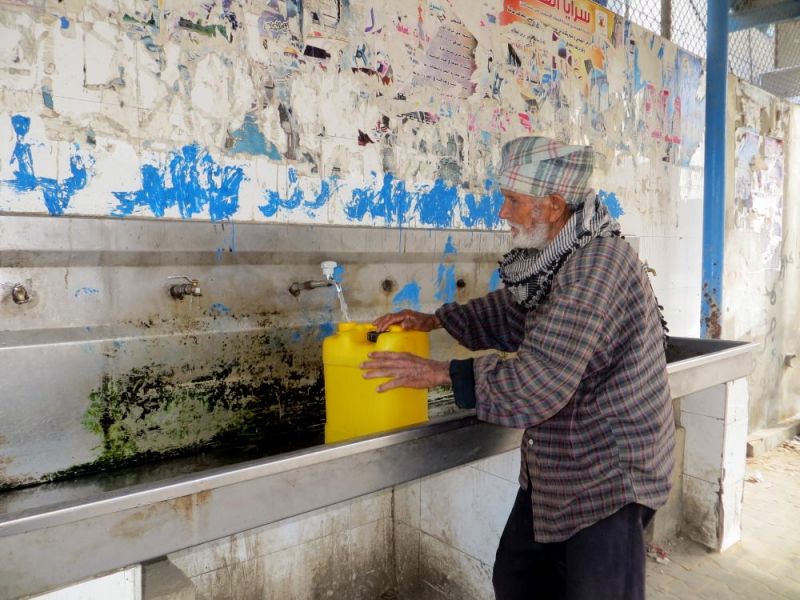97% of Gaza’s Drinking Water at Sewer Quality
Published on by Water Network Research, Official research team of The Water Network in Social
As much as 97% of the drinking water in the Gaza Strip is unfit for human consumption because of pollution from untreated sewage or because of a high level of salinity, according to Ahmed Yaakobi, a hydrologist who advises the Palestinian Water Authority in the Gaza Strip.
Yaakobi spoke during a debate on the Gaza water crisis at a conference of the Arava Institute‘s Public Council for Environmental Studies being held this week.

Gaza water crisis, representative image, source: Wikimedia Commons
The data indicate that a large part of the Gaza residents do not drink tap water because of their poor quality, but instead purchase drinking water from private enterprises that operate 136 small desalination plants – costing six times more than the normal price for water.
Gaza residents rely on polluted water for other domestic uses, but this dirty water is also in short supply.
According to Yaakobi, the poor state of the Gaza water is the result of excessive pumping of groundwater in the coastal aquifer, on which two million residents of the Gaza Strip rely almost entirely, in addition to a small amount of water coming from Israel.
“The annual amount that can be pumped without harming the aquifer’s regeneration capacity is 60 million cubic meters,” Jacoby told Haaretz, noting that “in practice, due to population growth and a lack of precipitation, the residents of the Gaza Strip draw 200 million cubic meters from the reservoir.”
Half of this quantity is drawn for domestic use, and the other half includes water from 5,000 private wells in the Gaza Strip.
Jacoby noted that over-pumping caused a sharp drop in the aquifer’s level, which allowed salt water to penetrate from the sea and raise the salt level of the groundwater. The salt concentration in the wells of Gaza is as high as 2,000 milligrams of chloride per liter, compared to the common standard of 250 milligrams of chloride per liter.
As a result, close to 90% of the water does not meet the WHO’s salinity standard.
Read full article: Jewish Press
Media
Taxonomy
- Drinking Water Security
- Decontamination
- Drinking Water Treatment
- Water Scarcity
- Water Access
- Contaminant Removal
- Scarcity
- Water Scarcity In Desert area
- Access
- Drinking Water Managment
- Drinking Water
- Contaminants